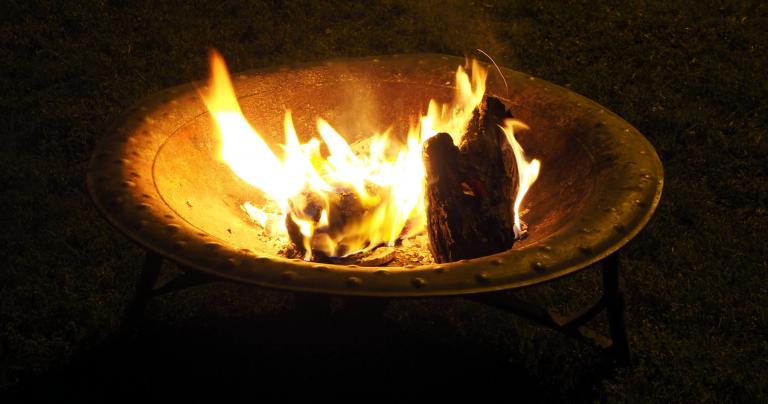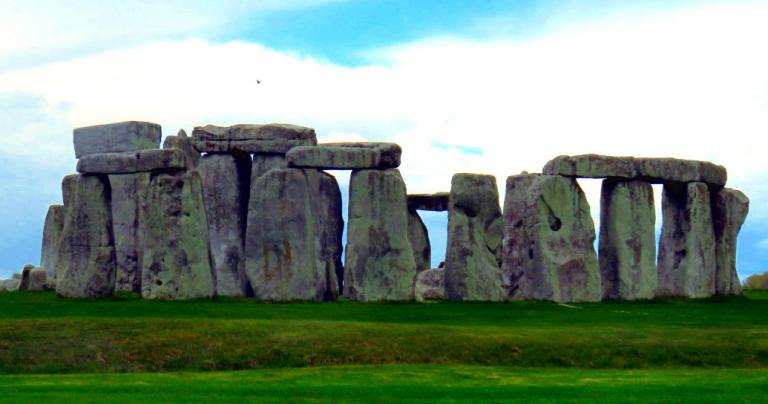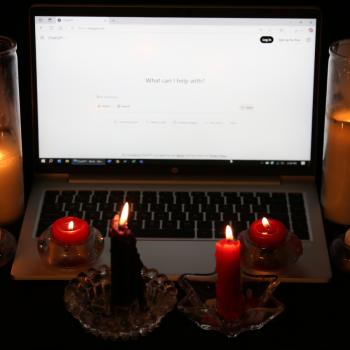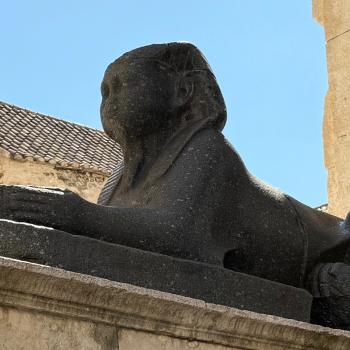Many Pagans are solitary practitioners, either by choice or by necessity. But a lot of Pagan activities for the Summer Solstice are designed for large groups. In 2014 and 2015 I wrote a series of rituals for those working alone on the Wheel of the Year. Every year they’re near the top of the list of most popular posts – here’s the Summer Solstice ritual.
But what if you’re part of a group that holds its rituals on the Saturday nearest the holiday and you don’t want to do a second ritual? Or maybe you’re just feel the need to do something other than a ritual this time. Here are eight things you can do to celebrate the Solstice.
This year’s (2019) Summer Solstice is Saturday, June 20 at 12:43 PM CDT.
1. Greet the sunrise
People have celebrated the Solstices for millennia and many ancient monuments are aligned with sunrise or sunset – the ancients knew the day of the Summer Solstice. But the idea of the Solstice as a moment in time is a relatively modern concept. So most traditional activities are geared toward the day, not the exact point in time. If you want to be traditional, don’t celebrate at 5:07 AM CDT, celebrate at your local sunrise.
Some local weather reports show sunrise and sunset times. I usually get them from the U.S. Naval Observatory website. Set your clock for a few minutes before “begin civil twilight” – that will give you plenty of time to experience the gradual brightening of the sky as the sun rises.
What do you do when you see the sun? Whatever seems right to you. Make an offering, say a prayer, recite a hymn to the sun, or just stand there and enjoy the sunrise.
2. Salute the Sun at noon
The only problem with greeting the sunrise is that you have to be up before dawn… and the further north you go (in the Northern Hemisphere) and the further east you are in your time zone, the earlier the sun rises. In Denton it’s 6:20 AM. In Spokane, Washington it’s 4:52 AM.
But the Summer Solstice is the height of the power of the sun, and the sun is strongest at noon. So go out, look up, and salute the sun at noon.
If you’re going to do this, I suggest you do it at local noon – the time when the sun is the highest in the sky it’s going to get for the location where you are. On the USNO website, it’s listed as “sun transit” – for Denton that’s 1:30 PM (remember we’re on Daylight Saving Time).
3. Bathe in the Sun
Paganism is a religion of experience. Yes, we pray and read and sing hymns like other religions, but we also want to feel our religion in our bodies. Much of Summer Solstice is about honoring the sun and relating to the sun – what better way to do that than to literally and physically take the sun into our bodies!
If you have a private back yard you can do this skyclad. If not, wear a swimsuit. If you don’t have a good place to sunbathe even in a swimsuit, just roll up your sleeves and feel the sun on your face and arms.
Excessive sun exposure can be a dangerous thing, particularly for those of us with pale skin. But I’m not talking about tanning, much less tanning under high-powered artificial lights. A little sun is a good thing – it stimulates production of vitamin D, which your body needs. And in small doses, it feels good.
So go outside and feel the sun on your skin – for a while.
4. Keep an all-night vigil
This one requires some work. On the night before the Solstice – on Midsummer’s Eve – go outside and set up a camp fire, a fire pit, or just a large candle (you’ll need more fuel, or more than one candle). Then spend the night in meditation, contemplation, and prayer.
This can be done indoors if necessary, but Pagan vigils are best done outside in Nature.
Prayer books and other resources are helpful here – you’ll run out of things to pray about extemporaneously very quickly. Plus standard prayers prayed over and over again are a good way to slip into a trance state. Just make sure trancing doesn’t slide into sleeping – that defeats the purpose of the vigil.
Some vigils require fasting, while others permit or even encourage food and drink. It helps to have a schedule: introductory prayers, meditation, libations, rote prayers, walking meditation, contemplation, food break. Then do it all over again until the skies start to lighten. Make sure your fire or candle stays lit all night.

At sunrise, get up and greet the sun with whatever prayers and offerings seem appropriate to you. Then extinguish your fire and go sleep for a while.
This is can also be done as a group. But if you do, make sure the focus stays on meditation, contemplation, and prayer, and doesn’t devolve into a party.
5. Honor a Sun God
Much of Summer Solstice is about the sun, but what if you’re a polytheist who prefers to keep your Paganism focused on the Gods? Then honor a Sun God.
Denton CUUPS earliest Egyptian Summer Solstice rituals included many of the Egyptian deities, but the main working was always dedicated to Ra. I wrote this for our first Egyptian Summer Solstice in 2004. I would phrase some of it differently today, but it’s held up well.
Hail, O God of the Sun. We welcome your presence as we celebrate the Solstice, the longest day, the pinnacle of your power; when you stand still in the Northern sky before you begin your journey Southward and the days grow shorter.
From the dawn of time, men and women of every land have honored, reverenced, and worshipped you, knowing that without your light and warmth, there could be no life on the earth.
For four thousand years, you saw the glory that was Egypt. Through the centuries, you were worshipped in many ways in many places, and you were known by many names, chief among them Amun and Aten.
Today, we honor you in the ways of modern Pagans, and in the ways of the ancient People of the Nile. Today, we call you and we honor you by your oldest name… Ra.
One thing I’d add today is that the Gods are whole persons, not just functions. Various deities may be Sun Gods (or Sun Goddesses – the sun is not considered male in every tradition), but They are more than a representation of our nearest star.
6. Read or watch A Midsummer Night’s Dream
Shakespeare, romance, comedy, and a Faerie Queen – what else could you ask for? I’m not a Shakespeare scholar so I won’t attempt to review or preview it. I’ll just say that if you want to do something traditional and less active, this is a good choice.
The play can be found for free online. IMDB lists 18 movie versions (if I counted right – separating full versions from shorts from TV episodes with the same name is a challenge). I saw the 1999 version with Michelle Pfeiffer as Titania when it was in the theaters. That was a while ago – all I remember was that I enjoyed it.
7. Gather herbs
Midsummer’s Eve is a traditional time to harvest herbs, especially St. John’s Wort. Summer Solstice is the peak of the sun’s power, so herbs with a solar correspondence should be at their most potent.
The usual caveats apply. Make sure you know what you’re harvesting, especially if you plan to ingest them – very different plants often look alike, and some are poisonous. Don’t take everything – the next person who comes along may need them just as much as you. And be respectful to the plants and to the ecosystem where you’re foraging.
8. Research Summer Solstice traditions around the world
Do you want to do something specific to the land of your ancestors? Or are you curious as to what ancient religious traditions may have survived into the modern era as culture? Do some research! In particular, Eastern Europe has some festivals that look very Pagan to me.
Want to celebrate the Summer Solstice at Stonehenge? You’ll have thousands of people celebrating with you, but from a historical perspective I still think you’re there six months out of phase.
However you celebrate, may your Summer Solstice be bright and joyous!















